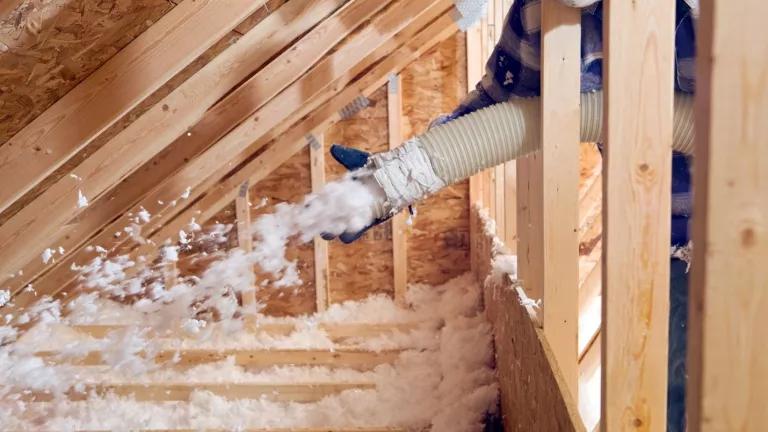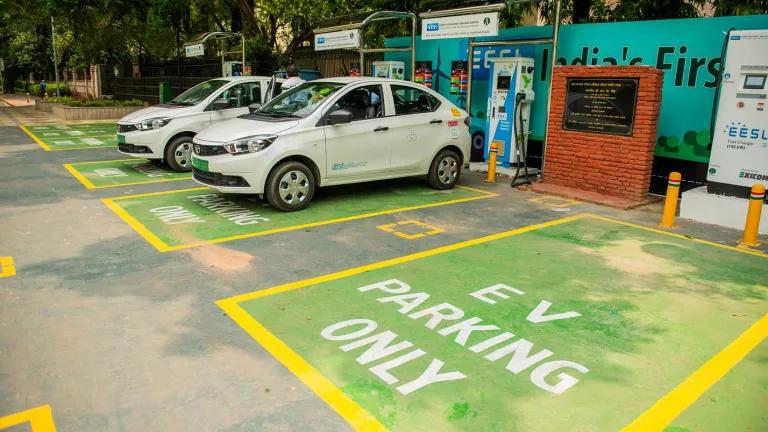Enabling Industry to Do More With Less - BlueGreen Alliance's Policy Platform to Improve Industrial Energy Efficiency

America’s manufacturing sector is the largest in the world and reducing energy waste at industrial facilities can provide huge benefits for the companies, workers, and the communities in which they work. That was reinforced yesterday by the BlueGreen Alliance, a partnership of labor unions and environmental organizations that includes NRDC, with its new Policy on Industrial Energy Efficiency.
The Alliance’s latest policy brief recommends both long-term goals and short-term strategies and federal investments to get us moving in the right direction. Those strategies include helping companies access financing, supporting cutting-edge technology development to aid our domestic industries in reducing their energy costs, and driving demand for industrial energy efficiency improvement projects.
(Sikorsky Manufacturing Plant in Stratford, CT)
The U.S. manufacturing sector, which supports nearly 12 million jobs and represents $1.8 trillion worth of gross domestic product, needs to become more energy-efficient to ward off increasing global competition, too.
There’s a great deal that companies and their workers can do together to capture energy savings, create and retain good-paying jobs, and cut pollution in their communities, as the BlueGreen Alliance’s policy brief notes. The potential for industrial energy efficiency is huge--$47 billion in energy bill savings are currently being left on the table in our industrial sector and cost-effective investments in industrial energy efficiency could reduce energy use by about 20 percent by 2020, according to a McKinsey study. However, financial and other barriers still stand in the way of capturing this potential.
Seeing the Benefits Firsthand
Many of BlueGreen Alliance’s union members already have experienced firsthand the benefits of industrial energy-savings measures in their workplaces:
- United Steelworkers have seen how the addition of combined heat and power technologies to ArcelorMittal’s Indiana Harbor steel facility has cut annual energy costs by nearly $20 million, while creating 360 manufacturing and construction jobs and retaining 6,000 workers at the facility by lowering production costs of steel by $5 per ton.
- In Springboro, Ohio, IUE-CWA members helped one of their employers Cobasys to identify $67,000 in energy bill savings through a “treasure hunt” at its advanced battery manufacturing plant.
- United Autoworkers at Chrysler’s truck and minivan assembly complex in St. Louis also have seen how a comprehensive energy assessment identified improvements to their boiler systems that saved $627,000 in energy costs each year and paid back the cost of the investment in the measures in just over 2 months.
These workers are all at the forefront of identifying and implementing these measures that will not only cut bottom-line energy costs for their employers, but also boost the competiveness and productivity of our domestic industries.
(ArcelorMittal, Department of Energy, and elected officials at a groundbreaking in front of North America's largest blast furnace, Source: DOE)
Much More Can Be Done
There’s so much more we can do. But, as NRDC’s Executive Director Peter Lehner noted in BGA’s release, we need bold leadership and concerted investments to ensure our manufacturing industry has the tools and resources it needs to cut energy waste, costs, and pollution. President Obama took a big step last year in advancing national goals for our industry with his Administration’s Executive Order on Accelerating Investment in Industrial Energy Efficiency. The President's recently announced Climate Action Plan will also do much to leverage the energy-saving potential in our manufacturing sector.
But more action is desperately needed by our leaders in Washington to support these goals. BlueGreen Alliance’s policy recommends a suite of short-term strategies that Congress can adopt to get us on the road to meeting them, including:
- Providing access to financing, which includes improve existing financial incentives for combined heat and power technologies, revitalizing the 48C Advanced Energy Manufacturing Tax Credit, providing additional Department of Energy grant funding for industrial energy efficiency projects, establishing a revolving loan fund to provide low-cost financing, and extending Master Limited Partnerships to energy efficiency projects at industrial facilities;
- Supporting technology development, including providing sufficient funding for the Advanced Manufacturing Office’s Rsearch, Development & Demonstration (RD&D) activities in support of innovative, energy-saving technologies for specific industries; and
- Breaking down barriers and creating demand, including building on President Obama’s industrial energy efficiency Executive Order by working to double the use of combined heat and power and waste heat recovery technologies, leveraging industrial energy efficiency to meet EPA standards to reduce carbon pollution, and setting a federal energy efficiency or clean energy standard.
We can boost the competiveness of our industries and create and retain jobs through cost-effective energy efficiency improvements—all while improving the health and welfare of our communities. Our industries and workers have the know-how and proven commercial technologies to spur an industrial energy efficiency revolution. Now we need action by our leaders to support catalysts for industry action, deepened industry expertise and knowledge of existing and new technologies, and standards to drive industry innovation and market demand. Let’s get to work!



